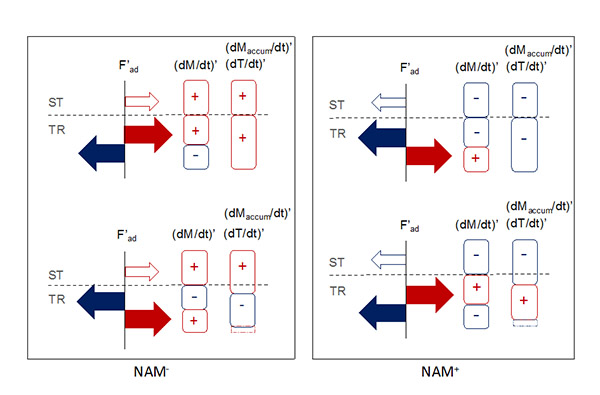State Key Laboratory of Numerical Modeling for Atmospheric Sciences and
Geophysical Fluid Dynamics (LASG)
Institute of Atmospheric Physics, Chinese Academy of Sciences

Vol.11/No.11 November 2019
Understanding the variational downward propagation of stratospheric signals during NAMs from a mass circulation perspective
Most previous studies emphasize a downward propagation of the stratospheric anomaly signals into the troposphere when they indicate the stratospheric downward impacts, but evidence also shows that, during quite some of the Northern Annular Modes (NAMs), there is no downward propagation. Later studies show that downward propagation may only occur during the NAMs that are moderately strong and long persistent. Ren and Cai (2007) indicated an out-of-phase relationship of the temperature anomalies during NAMs.
Recently, Prof. REN Rongcai from the State Key Laboratory of Atmospheric Sciences and Geophysical Fluid Dynamics (LASG), Institute of Atmospheric Physics, Chinese Academy of Sciences and Dr. YU Yueyue from Nanjing University of Information Science & Technology (NUIST) revisit the variational stratosphere–troposphere relation during NAMs from a perspective of the Meridional Mass Circulation (MMC). They first show that, the stratosphere–troposphere relation has no strong dependence on the intensity and duration of the NAMs, but agrees well with the variations of the three branches of MMC: the stratospheric poleward warm air branch (ST), the poleward warm air branch in the upper troposphere (WB), and the equatorward cold air branch in the lower troposphere (CB). The dynamic heating/cooling anomalies associated with the redistribution of air masses by the anomalous MMC in different isentropic layers explain the variational stratosphere–troposphere relation. A downward propagation of temperature anomalies into the lower troposphere appears only when the strengthening/weakening of the ST is generally in-phase with that of the WB/CB, and vice versa (Fig. 1). The variation of the ST as well as the WB/CB, in turn, is related to that of the baroclinic instability or the vertical tilting of waves in stratosphere and troposphere.

Citation:
YU, Yueyue and Rongcai REN*, 2019: Understanding the stratosphere–troposphere variation during stratospheric northern annular mode events from a mass circulation perspective, Climate Dynamics, 10.1007/s00382-019-04675-7
https://doi.org/10.1007/s00382-019-04675-7
Contact: REN Rongcai, rrc@lasg.iap.ac.cn
E-mail: lasg_newsletter@lasg.iap.ac.cn
Editors: Chuanyi Wang (wangcy@lasg.iap.ac.cn), Kangjun Chen(ckj@lasg.iap.ac.cn)